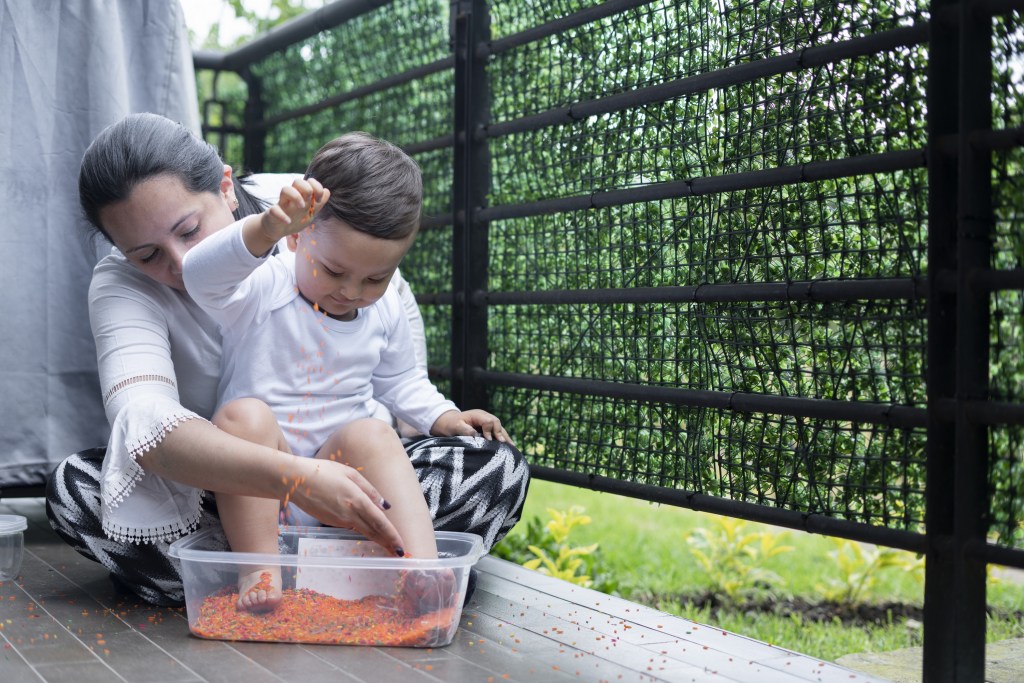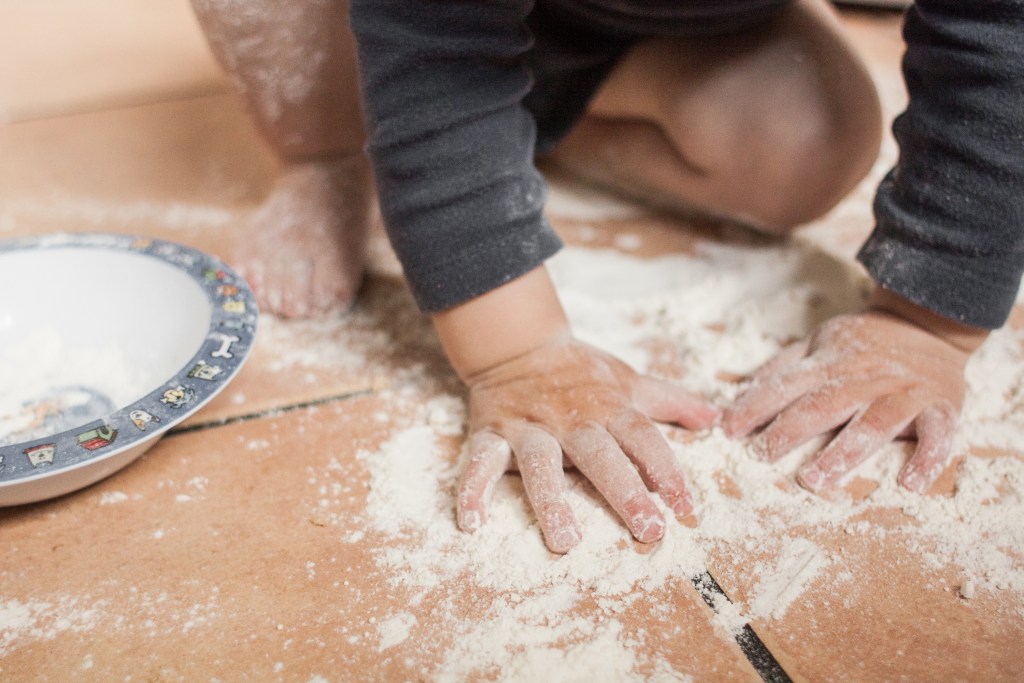If your toddler is getting ready to start preschool, you may be busy teaching them sight words and ensuring they’re independent enough to put on their own shoes and jacket without help from the teacher. Although teaching independence and reading basics are definitely important, sensory activities are another great way to help ready your child for preschool.
The best part about sensory activities is they don’t have to cost a lot of money and often just require a bit of imagination and some basic supplies you may already have. If you’re not sure what sensory activities are or how they can help your toddler get ready for preschool, read on to learn about four of the best sensory activities that will help ensure your toddler is ready for preschool.

What is a sensory activity for toddlers?
Sensory activities are just as they sound — activities that engage your senses. Engaging a child’s senses, most commonly their sight, touch, and hearing, but also sometimes including their taste and smell, is a wonderful way to help teach them about the world around them.
According to Healthline, “Sensory play offers children a unique opportunity to engage with the world in a way that helps them grow and develop. This kind of active play helps to create connections in the brain that allow for increasingly complex thoughts and tasks.” Sensory play can also be soothing to a child who may be experiencing anxiety or stress, and since sensory play is largely unstructured, it can help children learn and explore at their own pace.
What are the best practices for sensory play?
Sometimes it can be hard for parents to incorporate sensory play into their at-home playtime because they often perceive sensory play as messy, but that doesn’t have to be the case. Sensory play can definitely be messy, but it doesn’t have to be. However, allowing your child to be messy while playing lets them discover new tastes and textures and really experience them before being quickly cleaned up.
You can also make use of what you have around the house to create a sensory activity for your child without having to spend a lot of money. For instance, rice in a zip-close bag or a plastic container filled with beans can be just as fun as a sensory activity as an expensive toy for a toddler.
L.A. Parent also suggests using as many nonplastic items as possible, since so much plastic can feel the same for toddlers. Allowing kids to use their senses to safely explore their surroundings can really help prepare them for preschool. Here are four sensory activities you can create at home for your toddler.
1. Sensory bin
Sensory bins are a great way to use items you have around the home and create a fun and stimulating experience for your toddler. The best part about a sensory bin is you can change them up. If you’re OK with messy play, you can fill a bin with water and some of your toddler’s toy figurines, or you can create a dry bin by adding some oats, rice, or cereal along with jars or scoops. Busy Toddler has a great recipe for a rainbow rice bin that toddlers will love. Giving children the option to explore different textures, measurements, and weights really allows them to stay engaged while playing.
2. Water beads
Water beads are colorful, tiny beads that grow into squishy, vibrant beads when hydrated. Add them to a zip-close bag for a fun sensory activity, or fill a bowl with water beads and allow your toddler to hold them and play with them. Artful Parent has a ton of great ideas for sensory activities using water beads, including making a light table, using them in water balloons, and mixing them with shaving cream.

3. Sound tubes
Sound tubes are a great way to turn regular items around the house into fun, sensory activities. Healthline recommends you save up your empty paper towel or toilet paper rolls, and then find items from around the house, like uncooked rice, cereal, beads, glitter, or anything else that makes a fun noise. Pour some of the various items into the tubes and tape them shut. Your toddler will love shaking and playing with the various sound tubes while guessing which items are in each one. The best part of these is that you can continually create new sound tubes using different items you already have in your house.
4. Flour tray
If you’re not afraid of a bit of mess or your weather is nice and you want to do some playtime outside, grab a tray and pour flour on it. Your toddler will delight in making all sorts of designs in the flour, from writing letters and numbers to simply making finger “paintings” in the flour. You can also add small toys, trucks or cars, or even figurines to play with the flour. Hands On As We Grow has a lot of fun and different ideas for parents who want to make a flour sensory tray.
As you can see, sensory play just requires a little bit of imagination to create endless hours of fun, exploration, and learning for your toddler. Of course, it’s important to supervise your youngster if they tend to put things in their mouth or they’re using items that may be a choking hazard in your sensory activities. Allowing children to use their senses while playing really helps them as they get ready to head to preschool. These are just a few ideas of different sensory activities you can create using items you already have in your home.
Editors' Recommendations
- The best outdoor games for kids – try these fun, classic activities
- 4-year-old birthday party ideas: 7 low-stress themes your child will love
- Is your 4-year-old chewing on their shirt symptomatic of something wrong? What you need to know
- Need a Halloween craft for 10-year-olds? Here are spookingly great ideas
- Can you share a Disney Plus subscription with your family? What you need to know




